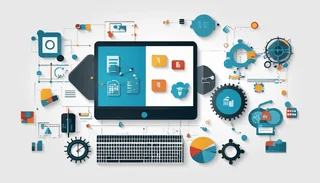Overview of the CompTIA 220-1102 Exam
CompTIA 220-1102 is the second part of the CompTIA A+ certification. The exam focuses on advanced troubleshooting and operational procedures for personal computers. Candidates should have a strong foundation in hardware, software, and networking concepts before attempting this exam. Successful completion of this exam, along with the 220-1101 exam, will earn you the CompTIA A+ certification.
DumpsBoss offers comprehensive preparation materials to help you succeed in the CompTIA 220-1102 exam. Our practice tests and study guides are designed to cover all the exam objectives and provide you with the knowledge and skills you need to pass the exam with confidence.
Definition of an Application
An application, also known as a software application or application software, is a computer program designed to perform a specific task or set of tasks. Applications are typically designed for end users, rather than for system administrators or programmers. They can be used for a wide variety of purposes, such as word processing, spreadsheet calculation, database management, web browsing, and playing games.
Applications are typically created using programming languages such as Java, Python, and C++. Once an application has been developed, it is compiled into machine code that can be executed by a computer's processor.
Applications can be either standalone programs or web-based applications. Standalone programs are installed on a user's computer and run locally. Web-based applications are accessed through a web browser and run on a remote server.
DumpsBoss offers a variety of practice tests and study guides to help you prepare for certification exams related to application development and other IT topics.
How Operating Systems Manage Applications
An operating system (OS) is a software program that manages the hardware and software resources of a computer. One of the most important functions of an OS is to manage applications. This includes tasks such as loading applications into memory, allocating resources to applications, and scheduling applications to run.
When a user launches an application, the OS loads the application's executable file into memory. The OS then creates a process for the application. A process is a container that holds the application's code, data, and other resources. The OS also allocates memory and other resources to the process.
Once the application's process has been created, the OS schedules the process to run. The OS uses a scheduling algorithm to determine which processes should run and in what order. The scheduling algorithm takes into account factors such as the priority of the process and the amount of resources that the process requires.
While the application is running, the OS continues to manage the application's resources. The OS ensures that the application has access to the resources that it needs and that the application does not interfere with other applications.
When the user closes the application, the OS terminates the application's process and frees up the resources that were allocated to the process.
DumpsBoss offers a variety of practice tests and study guides to help you prepare for certification exams related to operating systems and other IT topics.
Study Tips for CompTIA 220-1102 Exam
The CompTIA 220-1102 exam is the second part of the CompTIA A+ certification. It focuses on advanced troubleshooting and operational procedures for personal computers. To prepare for the exam, you should have a strong foundation in hardware, software, and networking concepts.
Here are some study tips to help you prepare for the CompTIA 220-1102 exam:
- Start studying early. Don't wait until the last minute to start studying. Give yourself plenty of time to review the material and practice answering exam questions.
- Set realistic study goals. Don't try to cram everything in at once. Break down your study material into smaller chunks and set realistic goals for each chunk.
- Use a variety of study methods. Don't just read the material over and over again. Use a variety of study methods, such as flashcards, practice questions, and hands-on labs.
- Take practice exams. One of the best ways to prepare for the exam is to take practice exams. This will help you identify your strengths and weaknesses and focus your studies on the areas where you need the most improvement.
- Get help when you need it. If you're struggling with a particular topic, don't be afraid to ask for help. You can find help from online forums, study groups, or your instructor.
DumpsBoss offers a variety of practice tests and study guides to help you prepare for the CompTIA 220-1102 exam. Our practice tests are designed to simulate the actual exam experience, and our study guides provide comprehensive coverage of the exam objectives.
Conclusion
The CompTIA 220-1102 exam is a challenging exam, but it is also an important one. By passing this exam, you will demonstrate your skills in advanced troubleshooting and operational procedures for personal computers. This knowledge and expertise will be valuable to you in your IT career.
To prepare for the CompTIA 220-1102 exam, you should start studying early, set realistic study goals, use a variety of study methods, take practice exams, and get help when you need it.
DumpsBoss offers a variety of practice tests and study guides to help you prepare for the CompTIA 220-1102 exam. Our practice tests are designed to simulate the actual exam experience, and our study guides provide comprehensive coverage of the exam objectives.
With hard work and dedication, you can pass the CompTIA 220-1102 exam and achieve your IT career goals.
Special Discount: Offer Valid For Limited Time “220-1102 Exam” Order Now!
Sample Questions for CompTIA 220-1102 Dumps
Actual exam question from CompTIA 220-1102 Exam.
Which of the following best describes an application running on a typical operating system?
A. It directly manages hardware resources without any OS intervention.
B. It operates independently of the operating system's services and APIs.
C. It relies on the operating system for resource management, memory allocation, and process scheduling.
D. It bypasses the operating system to execute commands directly on the CPU.


